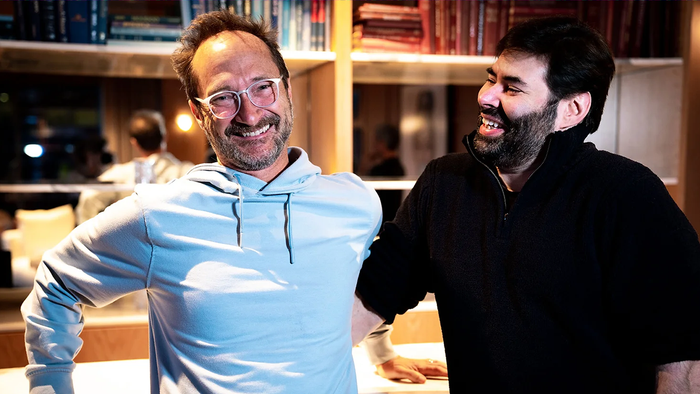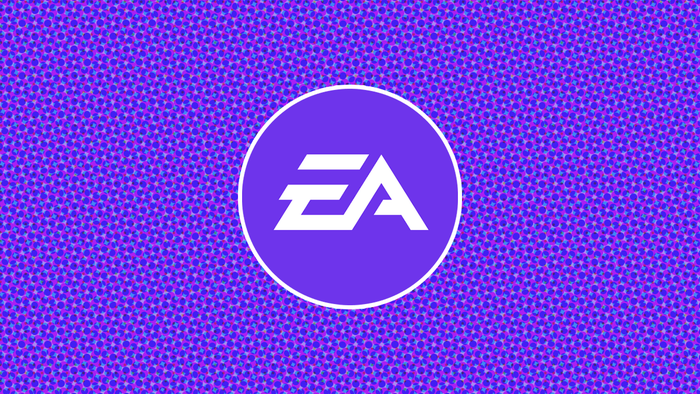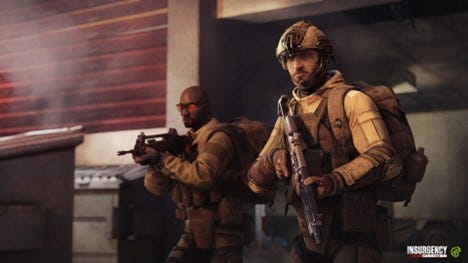Breaking linear character progression with Outer Worlds' flaw system
The Outer Worlds co-director Tim Cain tells Gamasutra about the thinking behind the game's unique "flaw" system, and how its design entices players to develop their characters in an organic, non-linear manner.

I was fighting for my life against a group of giant, acid-spewing lizards on the outskirts of Edgewater. I wasn't far from my ship and had already dealt with dozens of other Raptidons while spending time in this cannery colony. I finished off the last one with a few swings of my tossball stick and started walking up to my companions when a prompt popped up.
Spacer's Choice, one of The Outer Worlds' fictional megacorporations, had found a flaw in me. They think I have Raptophobia or the fear of Raptidons due to repeated encounters with the beasts. I can choose to accept the penalties associated with the flaw in exchange for a point--one I can use to unlock one of the several perks that give my player character things like more health or bag space. Or I could just decline the choice altogether and move on.
"The flaw system was an intersection of two different goals," Tim Cain told me. He's co-director of The Outer Worlds and also the game design legend known for creating the original Fallout. "One of our goals was to not do all the character creation upfront. We wanted the player to pick a few things about the character and then other things get decided later...We also wanted to combine it with the reactivity of the game."
"Character creation is the player telling the game how they want to play," he added, mentioning that Cthulu board and computer games helped inspire this system. "The flaws are the game telling the player 'here's what you did, do you want to react to it? You got hit by a lot of plasma, do you want to be plasma susceptible? You fight a lot of robots, do you want to be scared of them?'"
A character that isn't just a list of cool powers
The Outer Worlds' flaw system reacts to how the player chooses to advance through the story. If you fight a lot of robots you can get robophobia and lose dexterity and perception points when near mechanical enemies. You can also get addicted to drugs after taking too many and some stats will be lower when you go through withdrawals. You can choose to accept or reject a flaw when they come up, though each one is permanent once accepted.
It's all part of Obsidian's plan to have new types of gamified role-playing elements in their Fallout-esque first-person RPG. You can play as a charismatic gunslinger who hates robots or a tossball stick-swinging lockpicker with paranoia. You create your character as you play and not just in the character creation screen and when you level up. That's why perks unlock throughout the campaign and why you assign skill points to categories until you reach a certain threshold and specific skill categories open up. It's all part of an effort to have your character change as you hop from planet to planet.
"What I like about this makes the character creation a lot deeper. People think of character creation as all these cool things you can do," Cain says. "It's really just something that makes your character different and unique. There's something really cool about having a character that isn't just a list of cool powers and extra things they can do that normal people can't."
The flaw system wasn't originally designed to have to pay out perk points if a player accepted negative attributes. Cain and co-director Leonard Boyarsky told me they wanted to have specialized perks for each flaw that you couldn't obtain any other way. That would entice players to try different things, but time and budget restraints prevented them from fully implementing anything other than what we see in the final version of The Outer Worlds.

"The specialized perks were more related to the flaws," Cain said. "There were a whole bunch of flaws that we never implemented, but we had things like if you'd take more damage from robots you could also give more damage to them. I think we had one where your aim would go down but your fire rate would go up if there was a robot around. It was like 'ok I'm terrified and I'm just spraying bullets.'"
Cain and Boyarsky wanted flaws to force player to adopt different play styles when special situations come up. They didn't want players to exploit the flaw system in a way that simply reinforced or entrenched them in one play style. "Picking a difficulty setting makes the whole game hard," Cain said. "Flaws are supposed to make it situationally hard."
Dialogue flaws that didn't quite make it
Since The Outer Worlds launched in October 2019 Cain and Boyarsky have been listening and reading all sorts of feedback around this new system. One piece of criticism that hit home is the fact that the majority of flaws come into play during combat and not during dialogue or stealth sections. They had originally planned more non-combat flaws but they didn't make it in time for the final release.
"One of the flaws we wanted [in the game] was to be impulsive," Cain said. "When dialogue options come up there would be a little timer. When it ticked down to five seconds one of the response options disappears, just greyed out. Then another one after another five seconds until there was only one option left."
"The game wasn't saying you had to be impulsive," Cain added. "It was saying unless you play impulsively we're going to pick your options for you. So it had you picking really quickly." This flaw didn't make it into the game as the team was already having trouble keeping up with their AI demands and an individual flaw was low on the development team's priority list (players also wouldn't be reading most of the text if they had to rush through it).

They also wanted to add a pathological liar flaw where the player would have to choose to lie if one was available while in conversation. They found it wasn't as effective with how forgiving the dialogue system was in the game. They had a number of other non-combat flaws that didn't make it into the game, including a "hotheaded" one that forced players to attack whenever the dialogue system gave them that option.
The Outer Worlds does have a handful of non-combat perks including the drug addiction, farsighted, fear of heights, and a few others although most are dependent on combat. The development team brought the list of flaws and perks to the programmers on the team to see which ones would be the easiest to implement. "We ended up with a lot of susceptibilities, phobias, and addictions," Cain said. "Those were the main categories."
While we don't know much yet, Obsidian has talked about a possible sequel to The Outer Worlds. Cain hopes to build off the flaw system and incorporate some of the ideas that didn't make it into this game. He also hopes other role-playing game developers try their hand at something similar.
"I'm hoping this idea catches on, that character advancement isn't always linear. It isn't always about getting better," Cain said. "It's really about getting different. I'm making a character that doesn't always mean good things. I'm hoping that catches on outside our game."
About the Author(s)
You May Also Like













